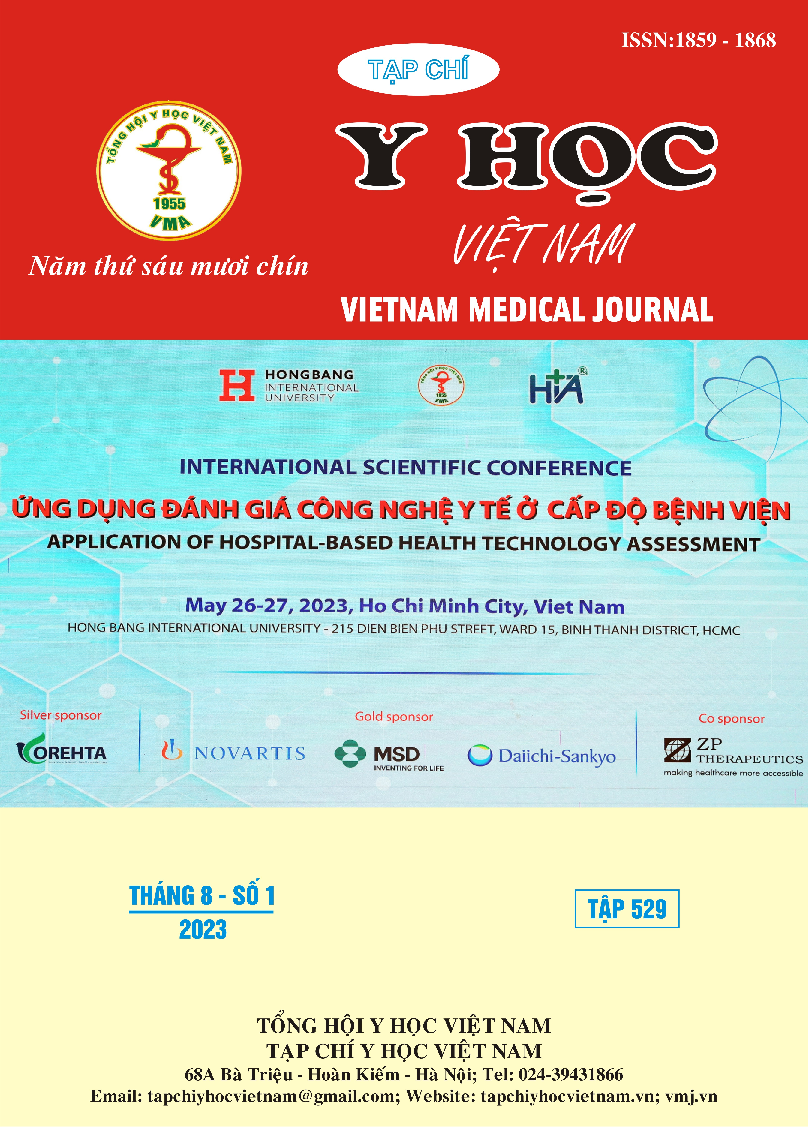HIỆU QUẢ GIÁO DỤC SỨC KHỎE TỰ CHĂM SÓC CHO NGƯỜI BỆNH CÓ DẪN LƯU ĐƯỜNG MẬT XUYÊN GAN QUA DA
Nội dung chính của bài viết
Tóm tắt
Đặt vấn đề: Dẫn lưu đường mật xuyên gan qua da (PTBD) là phương pháp xâm lấn giúp giải áp đường mật. Giáo dục sức khỏe về cách theo dõi và chăm sóc ống PTBD là rất cần thiết. Mục tiêu nghiên cứu: Xác định hiệu quả giáo dục sức khỏe về kiến thức và hành vi tự chăm sóc cho người chăm sóc người bệnh có PTBD. Đối tượng và phương pháp nghiên cứu: Nghiên cứu bán thực nghiệm đối với người chăm sóc chính của người bệnh có PTBD tại Khoa Ngoại Gan Mật Tụy, bệnh viện Chợ Rẫy. Kết quả: Kiến thức chung về bệnh tốt trước can thiệp là 69,4%, sau can thiệp đối tượng nghiên cứu đều trả lời đúng 100%. Kiến thức về tự chăm sóc, tỉ lệ người bệnh có kiến thức chưa tốt trước can thiệp là 25%, sau can thiệp với 100% người bệnh đều đạt kiến thức tốt (p<0,05). Kiến thức về tai biến, biến chứng cần biết để đến trung tâm y tế trước can thiệp có kiến thức tốt đạt 69,4%, sau can thiệp tăng 97,2% (p<0,05). Hành vi tự chăm sóc của đối tượng nghiên cứu trước can thiệp chỉ có 8,3% chăm sóc tốt, sau can thiệp là 75% (p<0,001). Kết luận: Có sự cải thiện đáng kể về kiến thức và hành vi tự chăm sóc cho người chăm
Chi tiết bài viết
Từ khóa
Giáo dục sức khỏe, tự chăm sóc, dẫn lưu đường mật xuyên gan qua da.
Tài liệu tham khảo
2. Heedman P. A., Astradsson E., Blomquist K., et al. (2018), "Palliation of Malignant Biliary Obstruction: Adverse Events are Common after Percutaneous Transhepatic Biliary Drainage", Scand J Surg, 107 (1), trang 48-53.
3. Nguyễn Quang Nghĩa, Lê Tuấn Linh, Ngô Lê Tâm và cộng sự (2007), "Dẫn lưu mật qua da trong ung thư đường mật: chỉ định và kỹ thuật", Y học Việt Nam, 1, trang 15-20.
4. Nguyễn Quốc Vinh, Đặng Văn Tâm (2009), "Vai trò dẫn lưu đường mật và đặt stent qua da trong điều trị giảm nhẹ tắc mật do bệnh lý ác tính", Y học Thành phố Hồ Chí Minh, 14, trang 98-103.
5. Yang X., Qin Y., Hu J., et al. (2017), "Application of continuity nursing model in caring patients receiving percutaneous transhepatic biliary drainage", Journal of Interventional Radiology (China), 26, trang 180-183.
6. Sayed S. A., Abu-Aisha H., Ahmed M. E., et al. (2013), "Effect of the patient's knowledge on peritonitis rates in peritoneal dialysis", Perit Dial Int, 33 (4), trang 362-366.
7. Nguyễn Thị Thu Hà, Trần Đức Hùng, Kiều Chí Thành (2015), "Đánh giá Kiến thức và Khảo sát sự tuân thủ vệ sinh tay của nhân viên y tế một số khoa lâm sàng Bệnh viện Quân Y 103", Hội nghị Khoa học Điều Dưỡng Bv Quân y 103.
8. Trần Thị Thu Trang, Nguyễn Tấn Thuận, Nguyễn Phú Ngọc Hân (2017), "Đánh giá Hiệu quả can thiệp về vệ sinh tay cho nhân viên y tế tại Bệnh viện Tai Mũi Họng Thành phố Hồ Chí Minh năm 2017", Thời sự Y học. trang 55-59


